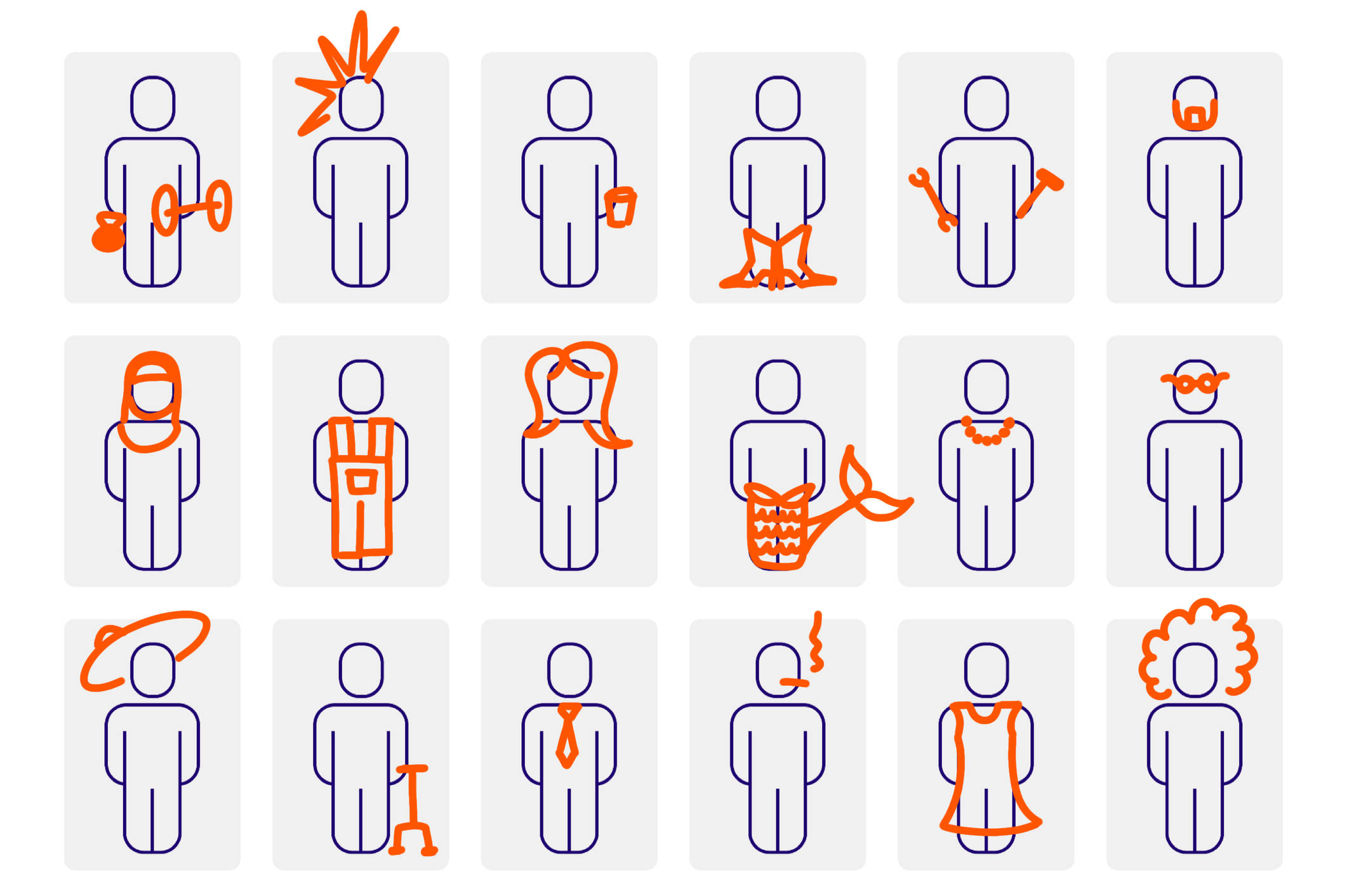Why I don't use personas
I never really use personas. But since I'm new at Fabrique I have stumbled upon them a couple of times already. I couldn't really figure out why I don't use them and why I don't like them. That's why I have gathered my thoughts about personas.

The idea of a persona sounds noble. By defining a set of variables based on user insights and other data sources we create a fictional character that will be used as a reference point during a design process. It enables designers and others alike to construct a world of associations, emotions and frustrations behind that persona. All this to feel the persona's feelings, otherwise described as empathy. The promise of the resulting empathy is that we are better equipped to design for this persona, and thus for the user group it is based on.
Flawed empathy
My first issue is that it creates the false notion that we are designing for a small set of personas instead of the bigger user group they are part of. Paul Bloom describes this issue in his book Against Empathy, in which he elaborates on how empathy can lead people to make immoral decisions. A heightened sensitivity for a specific person can lead to lower sensitivity for others. This might result in design decisions that favour our persona's needs over the needs of others. Doesn't this expose a possible flaw in our much appreciated user-centered design approach, especially when we are using personas to substitute for actual users?
Personas are reductive
My second issue has to do with the reductive nature of personas. It feels like that the more specific personas are, the better! The goal here is not to create an archetype that describes a generic version of a user but a stereotype that is based on what we think about a user. We use our ability to create associations and assumptions to further enrich the persona. Although this works very effectively, we must realise that these assumptions are affected by our personal biases.
When we look at the variables that define a persona, we usually find things like name, gender and favourite colour. These seem unimportant, but they do help us to create empathy and start our association engines. But I feel that they can be harmful too. Especially because they rely so heavily on our imagination and associations. It becomes hard to distinguish between a reasonable estimate and a flat out preconception.
By reducing a group of users into personas you also exclude possible new users. Who says teenagers don’t like puzzles? People might really surprise you. You will do them short by assuming what they can and won’t do. And if they are excluded in personas, they are automatically excluded from the design process. This might result in a design that won’t even reach teenagers because it wasn’t designed to do so. What a waste.
Personas and gender
Let's look at an example of one of these variables in more detail. Defining gender has become standard practise when drafting personas. Like creating personas, gendering is reductive. Usually we make a binary choice between man and woman, overlooking everything that sits in between or outside this spectrum. We hereby effectively exclude people from being considered in the design process.
Another issue when gendering a persona has to do with two very prominent stereotypes. The two genders are such staples in our society that it is hard not to be affected by them. Our association engine loves these concepts, because they have been built up by many encounters and representation throughout our lifetime. This, again, is effective and harmful. By gendering a persona we unlock a big world of meaning, but we easily fall back in preconceived ideas of that gender.
Easy excuse
Another danger is that designers use personas as go-to answers for design decisions. They become absolute truths that we don't have to reconsider or question. Design decisions are so much more than rational issues and can’t only be informed by tools or methods. I feel like design decisions should lie with a designer, and the designer should feel accountable for those decisions.
Don’t use personas
By defining a persona clearly, you inherently exclude those that don't fit that mould. So why even bother drafting a persona? Good question. By not using elaborate personas you don't risk falling back into harmful stereotypes while being inclusive. Ok, but what if we can't have personas? What will help us design for a big and varied user group?
Use user's motivations! Motivations transcend user segments and individual specs. They are not based in stereotypical worlds of associations and therefore focus on a concrete need that is relevant to the context at hand. This approach doesn’t force different needs and limitations into a single frame. The needs and limitations become independent elements that can be applied to any frame. This works in a very inclusive way, as you are accounting for the many combinations of these needs and limitations. Sounds good?